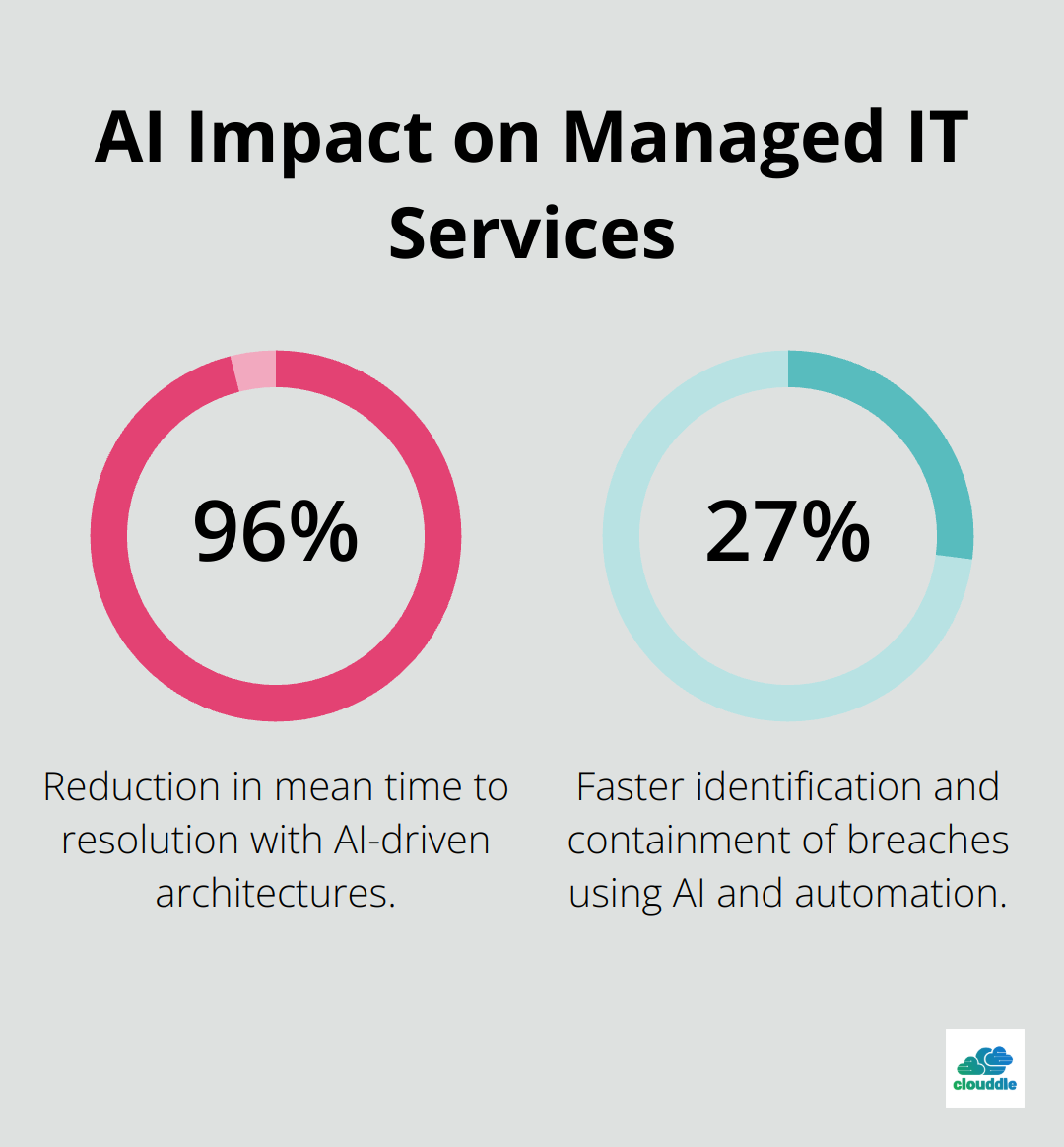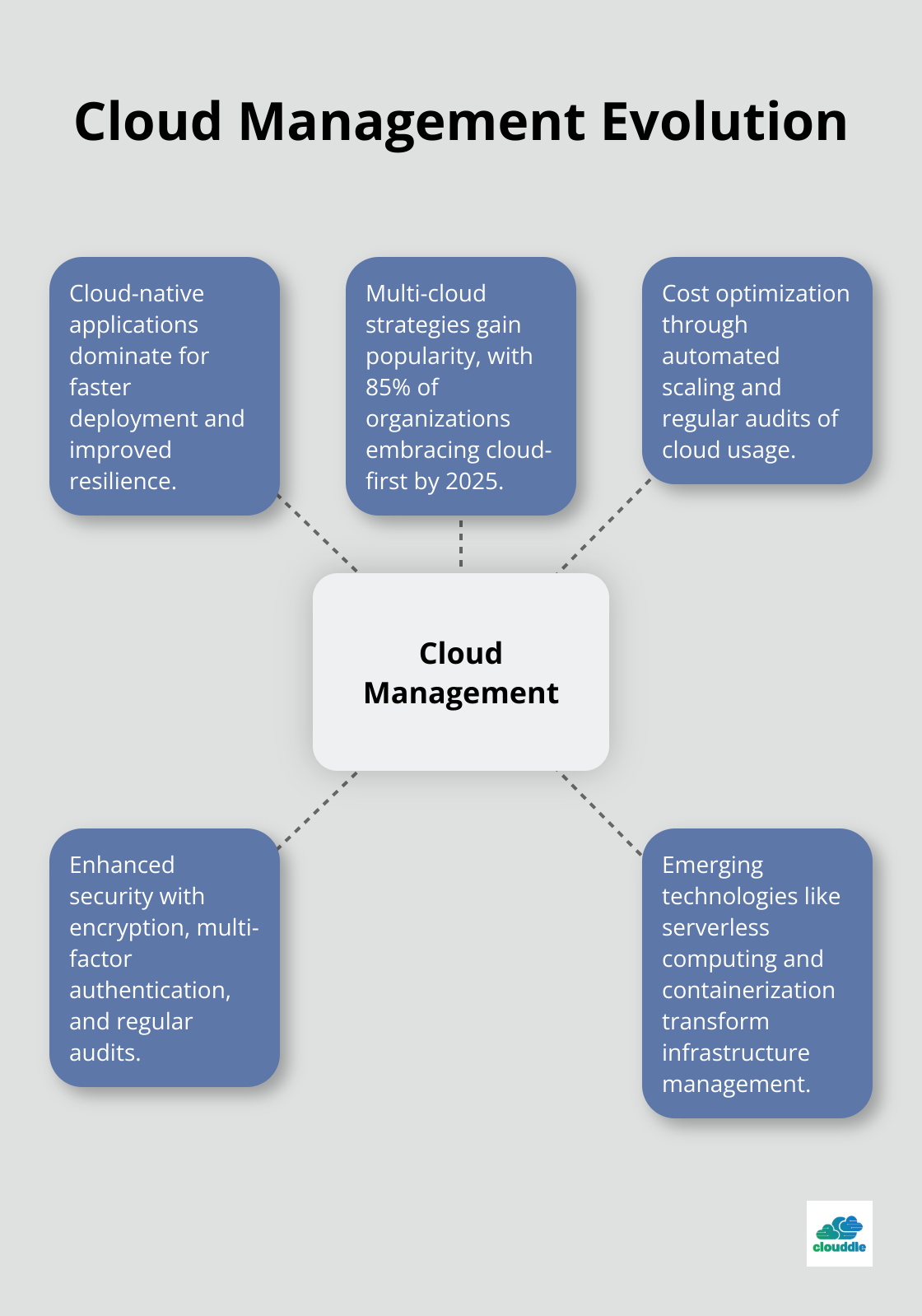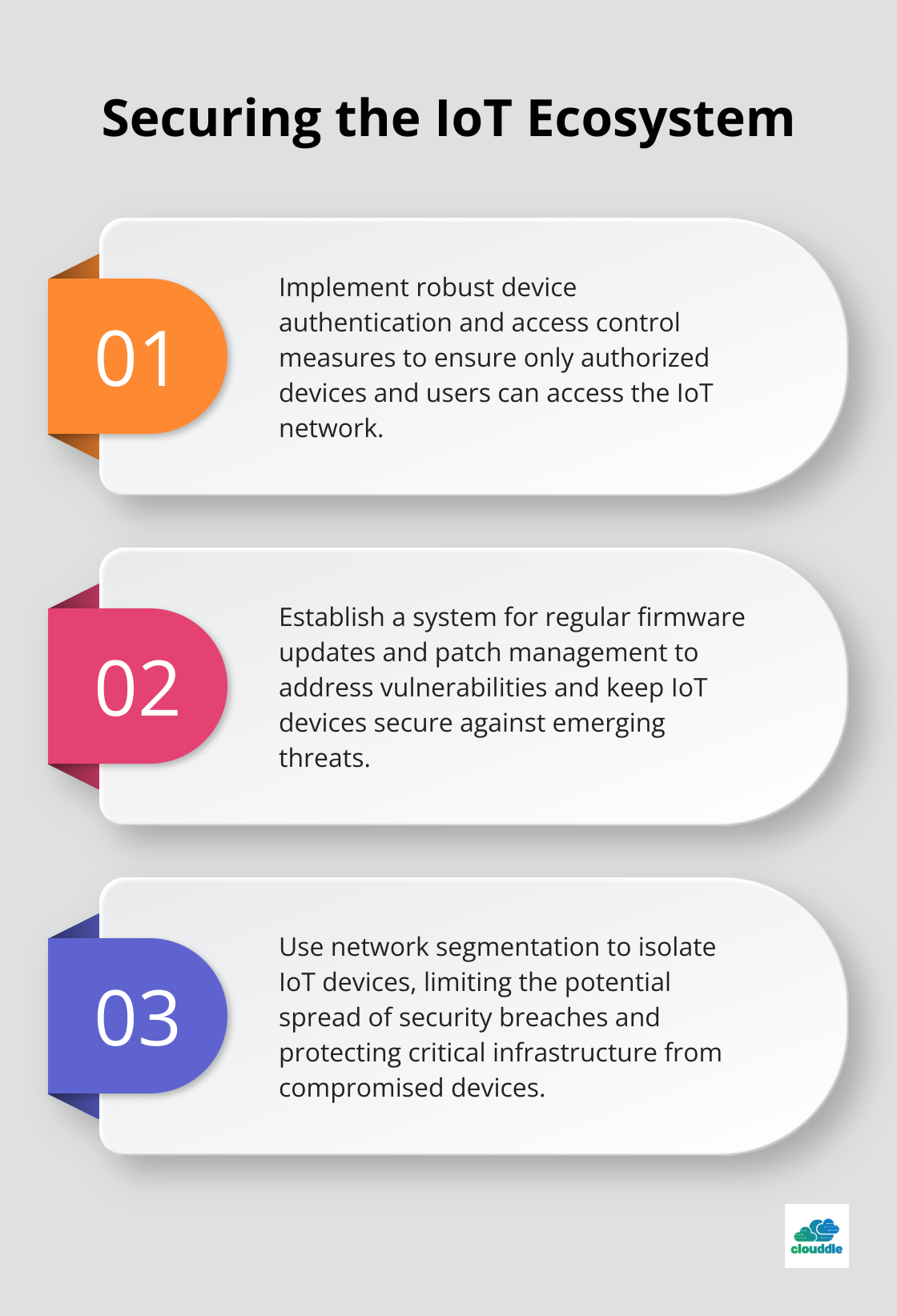The landscape of managed IT services is evolving at breakneck speed. At Clouddle, we’re constantly monitoring the latest managed IT services trends to stay ahead of the curve.
In this post, we’ll explore the game-changing technologies and strategies that are reshaping the industry. From AI-driven solutions to edge computing, these innovations are set to redefine how businesses approach their IT infrastructure.
How AI Revolutionizes Managed IT
AI and Machine Learning (ML) transform managed IT services, offering unparalleled capabilities in predictive maintenance, network optimization, and cybersecurity. These technologies are practical tools that reshape IT management approaches.
AI Predicts Issues Before They Occur
AI-powered predictive maintenance changes the game in IT infrastructure management. Studies show that predictive maintenance can reduce unplanned downtime by up to 50% and maintenance costs by 10-40%. AI identifies potential issues before they cause downtime by analyzing vast amounts of data from network devices, servers, and applications.
AI Optimizes Networks Automatically
Network optimization has traditionally been a time-consuming manual process. Now, AI algorithms automatically adjust network configurations in real-time, improving performance and reducing latency. Recent studies demonstrate that organizations adopting AI-driven architectures have achieved a 96% reduction in mean time to resolution, significantly improving network reliability and user experience.
AI Enhances Cybersecurity
In cybersecurity, AI proves to be a powerful ally. Machine learning algorithms analyze network traffic patterns and user behavior to detect anomalies that might indicate a security threat. IBM’s Cost of a Data Breach Report 2021 revealed that organizations using AI and automation in their security processes identified and contained breaches 27% faster than those that didn’t, saving an average of $3.58 million in breach costs.

The Future of AI in Managed IT
The integration of AI in managed IT services will only deepen. Businesses that embrace these technologies now will position themselves better to navigate the increasingly complex IT landscape, reduce costs, and improve their overall operational efficiency.
As we move forward, it’s important to note that while AI offers significant benefits, it’s not a one-size-fits-all solution. Human expertise remains essential in interpreting AI insights and making strategic decisions. The next frontier in managed IT services lies in the realm of cloud management, where AI and machine learning play a crucial role. Let’s explore how cloud-native applications and multi-cloud environments are shaping the future of IT infrastructure.
Cloud Management Evolution: Embracing the Future
Cloud-Native Applications Take Center Stage
Cloud-native applications now dominate the IT landscape. This shift stems from the need for faster deployment, easier scalability, and improved resilience.
Businesses should assess their current infrastructure to identify which applications will benefit most from this transition. We recommend starting with non-critical applications to gain experience before moving to core business systems.
Navigating the Multi-Cloud Landscape
Multi-cloud strategies continue to gain popularity. Gartner predicts that by 2025, more than 85% of organizations will embrace a cloud-first principle. This approach allows businesses to avoid vendor lock-in, optimize costs, and leverage the best services from different providers.
To manage multiple cloud environments effectively, businesses should:
- Implement a centralized management platform for comprehensive visibility.
- Develop a clear governance framework to ensure consistent policies.
- Invest in training for IT staff to build expertise across multiple cloud platforms.
Optimizing Cloud Costs and Resources
Cloud cost optimization remains a top priority for businesses. To address this issue, consider implementing:
- Automated scaling to adjust resources based on demand.
- Regular audits of cloud usage to eliminate unused or underutilized resources.
- Reserved instances or committed use discounts for predictable workloads.
Resource allocation in the cloud requires a strategic approach. Tools like AWS Cost Explorer or Google Cloud’s Recommender (both industry leaders alongside Clouddle) can provide insights into usage patterns and suggest optimizations.

Security in the Cloud Era
As cloud adoption increases, so does the need for robust security measures. Businesses must implement:
- Strong encryption for data in transit and at rest.
- Multi-factor authentication for all cloud services.
- Regular security audits and penetration testing.
Cloud security is not just about technology; it also involves training employees on best practices and creating a culture of security awareness.
The Future of Cloud Management
The cloud landscape continues to evolve rapidly. Emerging technologies like serverless computing and containerization (e.g., Kubernetes) are set to further transform how businesses manage their cloud infrastructure.
As we look towards the horizon of IT management, the next frontier lies in edge computing and IoT integration. These technologies promise to bring unprecedented levels of real-time data processing and analysis, reshaping how businesses operate in an increasingly connected world.
Cloud services are becoming increasingly essential for efficient remote and hybrid work, ensuring teams remain productive regardless of their location. This flexibility is a key factor in the ongoing evolution of cloud management.
Edge Computing Reshapes IT Landscapes
The Rise of Edge Infrastructure
Edge computing infrastructure expands rapidly. IDC projects worldwide spending on edge computing to reach $250.6 billion by 2024. This growth stems from the need for real-time data processing and reduced latency in applications (from autonomous vehicles to smart manufacturing).
Businesses deploy edge devices closer to data sources, such as retail stores, factories, and remote offices. These edge nodes process data locally, which reduces the need to send all information to centralized data centers. This approach speeds up data processing, reduces bandwidth costs, and improves data privacy.
Securing the IoT Ecosystem
The number of connected devices increases, which expands the attack surface for cybercriminals. IDC forecasts 55.7 billion connected IoT devices worldwide by 2025. Securing this vast ecosystem presents a significant challenge.
To address IoT security concerns, businesses should implement:
- Device authentication and access control
- Regular firmware updates and patch management
- Network segmentation to isolate IoT devices
- Encryption for data in transit and at rest
Organizations must develop comprehensive IoT security policies and conduct regular security audits to identify and address vulnerabilities.

Real-time Analytics at the Edge
The ability to process and analyze data in real-time at the edge transforms many industries. In manufacturing, edge analytics detects equipment failures before they occur, which reduces downtime and maintenance costs.
To leverage real-time analytics at the edge, businesses should:
- Identify use cases where immediate insights matter most
- Invest in edge devices with sufficient processing power
- Implement machine learning models that run on edge devices
- Establish a data strategy that balances edge and cloud processing
Companies like GE Digital report up to 25% improvement in asset performance and up to 10% reduction in maintenance costs through edge analytics implementation in their industrial operations.
Integration with Existing Infrastructure
The next frontier in managed IT services involves the integration of edge computing with existing cloud infrastructure. This creates a seamless hybrid environment that combines the best of both worlds.
Businesses must adapt their IT strategies to harness these technologies effectively. This adaptation includes:
- Assessing current infrastructure to identify areas for edge integration
- Developing skills within IT teams to manage edge devices and applications
- Creating data management strategies that encompass both edge and cloud environments
- Implementing security measures that extend from the cloud to the edge
As edge computing and IoT evolve, they reshape how businesses process and analyze data. This shift brings computing power closer to data sources, which enables faster decision-making and more efficient operations.
Final Thoughts
The managed IT services landscape evolves rapidly, driven by groundbreaking technologies and innovative strategies. AI, cloud-native applications, and edge computing push the boundaries of what’s possible in IT infrastructure management. These managed IT services trends reshape how businesses process data, optimize networks, and enhance cybersecurity.
Companies must adapt to this fast-paced tech environment to remain competitive. Businesses should invest in upskilling their IT teams, develop strategies for AI integration and cloud management, and create robust security measures. Regular assessment and updates of IT infrastructure will align with emerging technologies and industry best practices.
Clouddle understands the challenges and opportunities presented by these evolving trends in managed IT services. Our solutions in networking, Wi-Fi, and security services help businesses navigate this changing landscape effectively. We strive to keep our clients at the forefront of technology (without the burden of initial investments).


